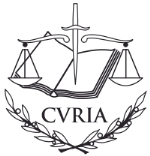 The entry into office of the additional judges will be the third stage of the reform of the judicial structure of the European Union.
The entry into office of the additional judges will be the third stage of the reform of the judicial structure of the European Union.
The General Court, currently composed of 46 Judges, welcomed seven additional Judges on 26 September 2019. Regulation (EU, Euratom) 2015/2422 of the European Parliament and of the Council of 16 December 2015 amending Protocol No 3 on the Statute of the Court of Justice of the European Union (‘the Statute’) is the legal framework of the reform.
Measures of various kinds have been adopted by the General Court to accompany its increase in size and to enable the enlarged College to work efficiently.
- The organisation of the Court has been redesigned, taking account of the increased number of Judges of which it will be composed. The number of Chambers of the General Court will increase from nine to ten. Each Chamber will be composed of five Judges, without prejudice to the possibility of forming Chambers composed of six Judges once all the Judges have been appointed.
- In order to enable a more diversified composition of the formations of the Court, their method of composition has been reviewed. At present, a Chamber of five Judges splits into two permanent formations over which the same President of Chamber presides. In future, the General Court has decided to increase the number of formations of the Court by providing for a rotation of Judges. A Chamber of five Judges will enable six formations to be created and a Chamber of six Judges will enable ten formations to be created.
- The method for composing the Grand Chamber (composed of 15 Judges) has been changed in order to enable Judges who are not Presidents of Chambers to sit in successive cases. The new method for constituting the Grand Chamberdiffers from the current method, which provides for the participation of the President, the Vice-President, all the Presidents of Chambers and the Judges of the Chamber initially dealing with the matter, in that the new method provides for the participation of the President, the Vice-President, a limited number of Presidents of Chambers, the Judges of the Chamber initially dealing with the matter and other Judges designated according to, alternately, the order of seniority and that order in reverse.
- Fourth, the General Court has decided to create specialised Chambers. Thus, among the ten Chambers of the General Court, four will handle staff cases and six Chambers will deal with intellectual property matters. All other actions will be allocated among all the Chambers.
In that context, the General Court has maintained its system for allocating cases to the Chambers on a rotational basis, as laid down in its Rules of Procedure, while adapting it to take account of the different specialisations of the Chambers, without prejudice to deviations from that rule due to the identification of links between particular cases (such as cases with the same subject-matter or which form part of a series or are similar legally) and to a balanced distribution of the case-load. - The General Court has decided to deepen the involvement of the President and the Vice-President in the judicial activity. For reasons connected with the scope of their responsibilities, it has been confirmed that the President and the Vice-President will not be Judges taking full part in formations of the Court. However, it has been decided that the President will, in future, replace a Judge who is prevented from acting (currently s/he is replaced by the Vice-President). In addition, the Vice-President, whose primary responsibility is to contribute to the maintenance of coherence in the case-law, will be called upon to sit in the Chambers in Extended Composition of five Judges in one case per Chamber per year.
Decisions adopted by the General Court for the period between 26 September 2019 and 31 August 2022:
- Composition of the Grand Chamber (OJ 2019 C 172, p.2)
- Criteria for the assignment of cases to Chambers (OJ 2019 C 246, p. 2)
- Designation of a Judge to replace a Judge who is prevented from acting (OJ 2019 C 263, p. 2)


















